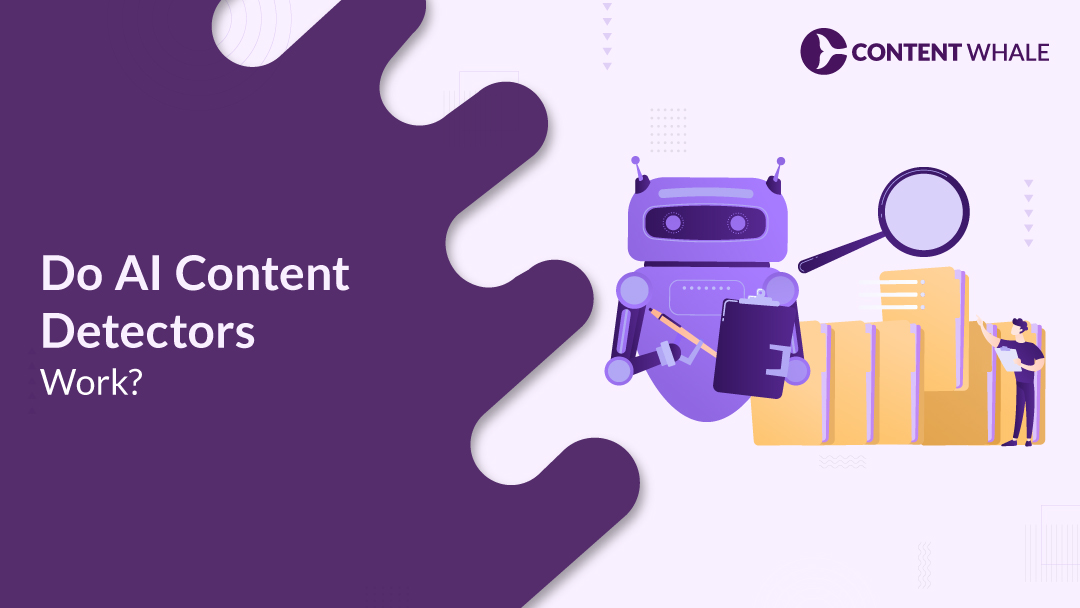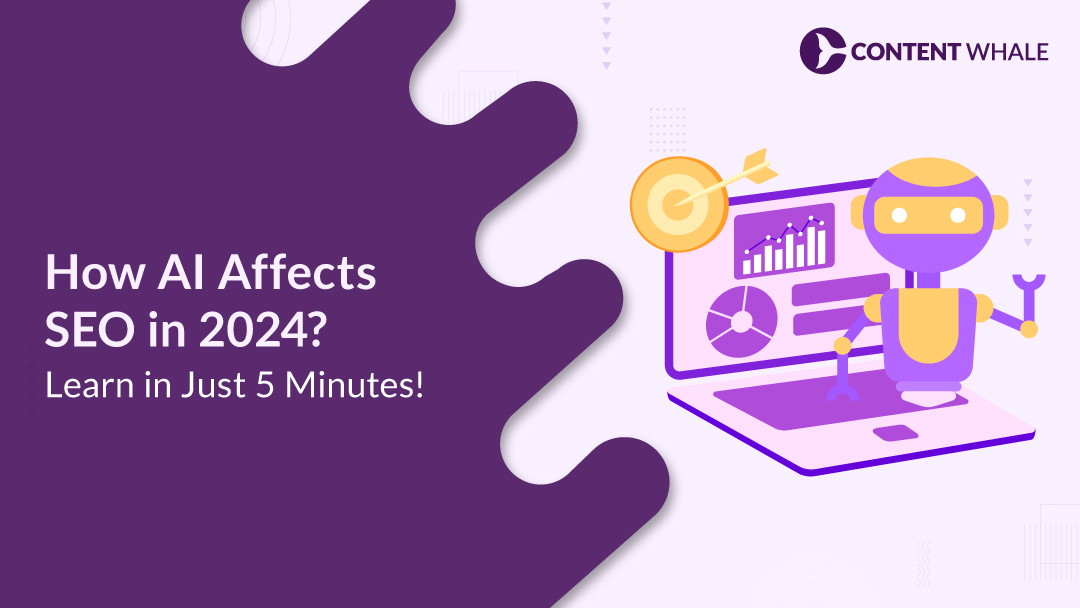The surge in AI-generated content has led to a growing concern about maintaining content authenticity. As more writers and organizations rely on AI writing tools, the need for effective methods of distinguishing between human and machine-generated text has become increasingly important.
This has prompted the development of various AI detection tools designed to tackle this challenge. But the big question is, do AI content detectors work as intended?
In this blog, we’ll explore the effectiveness of these detectors, their limitations, and alternative methods for ensuring content verification that goes beyond mere plagiarism detection.
1. What Are AI Content Detectors?
AI content detectors are tools specifically designed to determine whether a piece of text was generated by AI or written by a human. These tools are becoming increasingly important as the use of AI writing tools grows. Here’s a closer look at how these detectors work and why they are essential:
a) How Do AI Content Detectors Work?
- Advanced Algorithms: AI content detectors use sophisticated algorithms and AI detection tools to analyze text. They look for patterns typical of AI-generated content, such as repetitive phrasing or unnatural sentence structure.
- Linguistic Analysis: These tools assess various linguistic features, including syntax, grammar, and style, to determine the likelihood that the content was created by an AI model like GPT-4.
- Detailed Reports: Tools like GPTZero and Originality.ai not only identify AI-generated sections but also provide detailed reports. These reports often highlight specific parts of the text that may show signs of AI involvement, aiding in manual content checking.
b) Why Are AI Content Detectors Important?
- Ensuring Content Authenticity: In an era where AI can produce high-quality text, maintaining content authenticity is crucial, especially in fields like education, digital marketing, and publishing.
- Supporting Plagiarism Detection: While primarily focused on identifying AI-generated content, these detectors complement traditional plagiarism detection tools, ensuring that all aspects of content originality are covered.
- Upholding Quality Standards: By verifying the source of the content, AI content detectors help maintain the integrity and quality of published materials, whether they are academic papers, blog posts, or business documents.
2. How Effective Are AI Content Detectors?
The effectiveness of AI content detectors is influenced by several critical factors, leading to varying degrees of success in accurately identifying AI-generated content.
a) Factors Influencing Accuracy
- Training Data Quality: The performance of AI detection tools largely hinges on the diversity and quality of their training data. Tools like Originality.ai and Copyleaks, for instance, utilize vast datasets to teach their algorithms the nuances of human versus AI writing. However, even with extensive training, these tools can falter when dealing with intricate and creative content that closely mimics human writing.
- Evolving AI Models: As AI writing tools, such as GPT-4, continue to evolve, they increasingly mirror human writing styles, making detection more challenging. Some detectors boast up to 99% accuracy, but real-world tests often reveal inconsistencies, particularly when the AI-generated content has been edited by humans. This sophistication in AI models leads to a growing challenge for detection tools to keep pace.
- False Positives and Negatives: One significant limitation of AI content detection is the occurrence of false positives—where human-written text is incorrectly flagged as AI-generated. Tools like GPTZero and others have shown instances where these errors can undermine the credibility of detection results. Additionally, AI-generated content that has been slightly modified by humans often escapes detection, raising concerns about the overall reliability of these tools.
| Tool Name | Type | Key Features | Pricing |
| Grammarly | Plagiarism Checker | Extensive plagiarism checker, integrates with various platforms, includes grammar and tone checking | Starts at $11/month |
| PlagScan | Plagiarism Checker | Intuitive color-coded system, good for academic use, API integration for businesses | Varies by usage, $6-$50/month |
| GPTZero | AI Content Detector | First public AI detector, deep scan features, detailed reports, and high accuracy | Starts at $10/month |
| Originality.ai | AI Content Detector | Detects AI content across multiple models, Chrome extension, and API integration | Starts at $12.45/month |
| Copyleaks | AI Content Detector | Covers 30 languages, detects AI and paraphrased content, offers plagiarism detection | Starts at $7.99/month |
3. Why AI Detectors Are Not Reliable
AI content detectors, while innovative, face several significant challenges that question their reliability. Here’s a closer look at why these AI detection tools often fall short:
a) Evolving AI Models
- AI models, such as GPT-4, continue to evolve, becoming increasingly sophisticated in mimicking human writing.
- This evolution makes it difficult for detectors to accurately distinguish between human-written and AI-generated content.
- Detectors that were effective a year ago may now struggle with the latest AI outputs, leading to a constant race between detection technology and AI writing tools.
b) Training Data Bias
- Many AI content detectors are trained on specific datasets that may not fully represent the diversity of human writing.
- This bias is particularly problematic when dealing with non-native English writers, as studies have shown that these detectors often misclassify their work as AI-generated.
- This issue of bias highlights the limitations of AI content detection and the potential for unfair consequences, especially in academic and professional settings.
c) False Positives
- A significant challenge with AI detectors is the high rate of false positives, where human-written content is mistakenly flagged as AI-generated. Instances of this include well-known texts, such as parts of the U.S. Constitution, being incorrectly identified as AI-written.
- Such errors can have serious implications, leading to false accusations of misconduct and undermining trust in these detection tools.
d) Inconsistent Results
- Different AI detectors can produce varying results for the same content. For instance, a piece of text flagged as AI-generated by one tool might pass as human-written by another. This inconsistency is further complicated when AI-generated content is paraphrased or slightly edited, making it even harder for detectors to identify it accurately.
- The inconsistency in results raises questions about the reliability of these tools in ensuring content authenticity.
e) Contextual and Stylistic Challenges
- AI detectors often struggle with content that includes nuanced language, cultural references, or creative expression. Such content may escape detection or, conversely, be wrongly flagged as AI-generated due to its complexity.
- This limitation underscores the need for manual content checking and human content review to complement AI tools.
4. Alternatives to AI Content Detectors
Given the limitations of AI content detection tools, relying solely on them may not be enough to ensure content authenticity. Here are several effective alternatives that can complement or replace AI detectors:
a) Human Review and Editing
- One of the most reliable methods for verifying the authenticity of content is human content review. Experienced editors or subject matter experts can spot nuances, contextual relevance, and originality that AI detection tools might miss.
- Human reviewers are adept at detecting subtle linguistic patterns, cultural references, and stylistic choices that AI may overlook. This manual content checking process is essential, especially for high-stakes content like academic papers or professional publications.
b) Peer Review
- In academic and professional contexts, peer review serves as a robust method of content verification. This process involves experts in the field reviewing the content to ensure its originality, relevance, and contribution to the field.
- Peer review is particularly effective in identifying issues such as plagiarism and ensuring that the content meets the required standards of quality and integrity.
c) Plagiarism Detection Tools
- Traditional plagiarism detection tools like Grammarly and Copyleaks offer a reliable way to ensure that content is original. These tools scan the text against vast databases of published work to detect copied or paraphrased content.
- While they may not specifically identify AI-generated content, they are invaluable in maintaining the originality of the work. Many of these tools now also include AI detection features, providing a dual layer of verification.
d) Collaborative Writing
- Engaging multiple contributors in the content creation process can naturally lead to more diverse and human-like writing. This collaborative approach reduces the likelihood of producing content that mimics AI-generated text, making it less likely to be flagged by AI detection tools.
- Collaborative writing fosters creativity and introduces varied perspectives, which are key to producing authentic and engaging content.
e) Contextual Analysis
- Using contextual analysis tools that evaluate the tone, readability, and audience alignment of content can further enhance content verification. These tools analyze whether the content meets the intended purpose and resonates with the target audience.
- They focus on the overall effectiveness of the content rather than just its origin, providing a holistic approach to content evaluation.
Conclusion
While AI content detection tools offer promising solutions, their effectiveness is limited by evolving AI models, biases, and the risk of false positives and negatives. Current tools struggle to reliably differentiate between AI-generated content and human writing, making them insufficient for ensuring complete content authenticity. Integrating these tools with human content review and other verification methods remains essential.
As AI continues to advance, a combination of manual content checking and evolving detection technologies will be necessary to maintain the integrity of digital content.
If you want to elevate your writing, Content Whale’s expert content creation and link-building strategies can help you achieve your goals and stand out in competitive markets.
FAQs
1. How do AI content detectors work?
AI content detection tools analyze text for patterns typical of AI-generated content. They use machine learning algorithms trained on vast datasets to identify characteristics like repetitive phrasing or unnatural syntax, which are common in AI-produced text.
2. What are the limitations of current AI content detectors?
Current AI detection tools face challenges like biases in training data, evolving AI models, and high rates of false positives. These issues limit their effectiveness in accurately distinguishing between human-written and AI-generated content.
3. What are the best alternatives to AI content detectors?
Alternatives include human content review, plagiarism detection tools, and manual content checking. These methods provide a more reliable approach to ensuring content authenticity.
4. Can traditional plagiarism checkers detect AI-generated content?
While traditional plagiarism detection tools like Grammarly can identify copied content, they are not specifically designed to detect AI-generated text.
5. Why is human review important in content verification?
Human content review is crucial because it can catch nuances and contextual details that AI detection tools might miss, ensuring a higher level of content verification.





